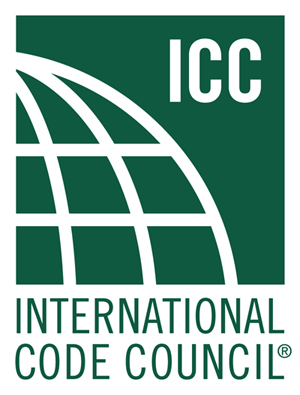Your cart is currently empty!
“Comprehensive Guide to the International Swimming Pool Code”

The International Swimming Pool and Spa Code (ISPSC) is an essential guide for anyone involved in the design, construction, and maintenance of swimming pools and spas. This comprehensive code provides a standardized set of regulations to ensure safety, efficiency, and sustainability in the aquatic industry. In this article, we will delve into the various aspects of the ISPSC, exploring its key provisions, the benefits of adhering to its standards, and strategies for effective implementation and compliance.
Overview of the International Swimming Pool and Spa Code
The International Swimming Pool and Spa Code (ISPSC) is developed by the International Code Council (ICC) in collaboration with the Association of Pool & Spa Professionals (APSP). It serves as a model code that can be adopted and enforced by jurisdictions around the world. The code aims to provide a comprehensive framework for the regulation of swimming pools, spas, and related facilities, addressing a wide range of safety, health, and operational concerns.
The ISPSC covers various types of aquatic facilities, including residential pools, public pools, and commercial spas. It establishes guidelines for the design, construction, alteration, repair, and maintenance of these facilities. The code also addresses issues such as water quality, structural integrity, barrier requirements, and energy efficiency, ensuring that all aspects of pool and spa safety are considered.
One of the key features of the ISPSC is its focus on harmonization with other international codes and standards. This ensures that the regulations are consistent and compatible with existing building codes, plumbing codes, and electrical codes. By providing a unified set of standards, the ISPSC helps to streamline the regulatory process and reduce confusion for builders, inspectors, and facility operators.
The ISPSC is updated every three years to reflect the latest advancements in technology, safety practices, and industry standards. This regular revision process ensures that the code remains relevant and effective in addressing emerging challenges and opportunities in the aquatic industry. The most recent edition of the ISPSC includes important updates on topics such as energy efficiency, water conservation, and accessibility for individuals with disabilities.
In addition to the code itself, the ICC provides a range of resources and support materials to help stakeholders understand and apply the ISPSC. These resources include training programs, technical manuals, and online tools. By offering comprehensive guidance and support, the ICC helps to ensure that the ISPSC is implemented effectively and consistently across different jurisdictions.
For more detailed information about the ISPSC and related resources, you can visit IBC Manual.
Key Provisions and Requirements of the ISPSC
The ISPSC includes a wide range of provisions and requirements designed to ensure the safety, health, and welfare of pool and spa users. One of the fundamental aspects of the code is its focus on barrier requirements. These provisions are intended to prevent accidental drownings by ensuring that pools and spas are properly enclosed and inaccessible to unsupervised children. The code specifies the minimum height for barriers, the allowable gap sizes, and the types of materials that can be used.
Another critical area addressed by the ISPSC is water quality. The code sets standards for water circulation, filtration, and disinfection to ensure that pool and spa water remains clean and safe for users. This includes requirements for the installation and maintenance of pumps, filters, and chemical treatment systems. The ISPSC also addresses issues related to water temperature, ensuring that heating systems are properly installed and maintained to prevent scalding and other hazards.
The ISPSC also includes provisions related to structural integrity and construction standards. These requirements ensure that pools and spas are built to withstand the stresses and loads they will encounter during use. This includes specifications for materials, construction methods, and inspection procedures. By adhering to these standards, builders can ensure that their projects are safe, durable, and compliant with the latest industry best practices.
Energy efficiency is another important focus of the ISPSC. The code includes requirements for the installation of energy-efficient equipment and systems, such as variable-speed pumps, high-efficiency heaters, and energy-saving lighting. These provisions help to reduce the environmental impact of pools and spas while also lowering operating costs for facility owners. The ISPSC also addresses issues related to water conservation, encouraging the use of water-saving technologies and practices.
Accessibility is a key consideration in the ISPSC, particularly for public and commercial facilities. The code includes requirements to ensure that pools and spas are accessible to individuals with disabilities. This includes provisions for ramps, lifts, and other accessibility features. By adhering to these requirements, facility owners can ensure that their pools and spas are inclusive and welcoming to all users.
For a comprehensive understanding of all the provisions and requirements of the ISPSC, refer to the detailed guidelines available at IBC Manual.
Benefits of Adhering to the ISPSC Standards
Adhering to the ISPSC standards offers numerous benefits for pool and spa owners, operators, and users. One of the primary advantages is enhanced safety. By following the guidelines set forth in the ISPSC, facility owners can significantly reduce the risk of accidents, injuries, and drownings. This not only protects users but also helps to mitigate liability and potential legal issues for facility operators.
Another key benefit of adhering to the ISPSC standards is improved water quality and hygiene. The code’s requirements for water circulation, filtration, and disinfection ensure that pool and spa water remains clean and safe for users. This helps to prevent the spread of waterborne illnesses and infections, promoting a healthier and more enjoyable experience for all users.
Energy efficiency is another significant advantage of following the ISPSC standards. The code includes provisions for the installation of energy-efficient equipment and systems, which can help to reduce energy consumption and lower operating costs. This is not only beneficial for facility owners but also contributes to environmental sustainability by reducing the overall carbon footprint of pools and spas.
Compliance with the ISPSC can also enhance the overall quality and durability of pool and spa facilities. The code’s construction standards and requirements for structural integrity ensure that these facilities are built to withstand the stresses and loads they will encounter during use. This can help to prevent costly repairs and maintenance issues in the long term, providing facility owners with peace of mind and protecting their investment.
Adhering to the ISPSC standards can also improve accessibility and inclusivity. The code includes provisions to ensure that pools and spas are accessible to individuals with disabilities, promoting a more inclusive and welcoming environment for all users. This can help to attract a broader range of clientele and enhance the overall reputation of the facility.
Finally, following the ISPSC standards can help to streamline the regulatory process and ensure compliance with local building codes and regulations. The ISPSC is designed to be harmonized with other international codes and standards, making it easier for facility owners and operators to navigate the complex regulatory landscape. This can help to reduce delays and complications during the design, construction, and inspection phases, ensuring a smoother and more efficient process.
For more insights into the benefits of adhering to the ISPSC standards, visit IBC Manual.
Implementation and Compliance Strategies for ISPSC
Successfully implementing and complying with the ISPSC requires a strategic approach and a thorough understanding of the code’s provisions and requirements. One of the first steps in this process is to become familiar with the latest edition of the ISPSC and any relevant updates. This can be achieved through training programs, workshops, and resources provided by the ICC and other industry organizations.
Engaging with experienced professionals is another critical strategy for effective implementation and compliance. This includes architects, engineers, contractors, and inspectors who are knowledgeable about the ISPSC and its requirements. Collaborating with these experts can help to ensure that all aspects of the project are designed and constructed in accordance with the code, reducing the risk of non-compliance and potential issues down the line.
Regular inspections and maintenance are essential for ongoing compliance with the ISPSC. Facility owners and operators should establish a routine schedule for inspecting and maintaining their pools and spas, addressing any issues promptly to ensure continued compliance with the code. This includes checking barriers, water quality, structural integrity, and energy efficiency systems to ensure they meet the ISPSC standards.
Documentation and record-keeping are also important components of a successful compliance strategy. Keeping detailed records of inspections, maintenance activities, and any modifications or repairs can help to demonstrate compliance with the ISPSC and provide a valuable reference in the event of an audit or inspection. This documentation can also help to identify trends and potential areas for improvement, supporting ongoing efforts to enhance safety and efficiency.
Education and training for staff and users are crucial for maintaining compliance with the ISPSC. Facility operators should provide regular training sessions for their staff to ensure they are knowledgeable about the code’s requirements and best practices for maintaining a safe and compliant facility. Educating users about the importance of following safety guidelines and reporting any issues can also help to promote a culture of safety and compliance.
Finally, staying informed about industry trends and updates to the ISPSC is essential for ongoing compliance. The ICC regularly updates the code to reflect the latest advancements in technology, safety practices, and industry standards. By staying current with these updates and incorporating them into their operations, facility owners and operators can ensure that they remain in compliance with the ISPSC and continue to provide a safe and enjoyable experience for their users.
For more detailed guidance on implementation and compliance strategies for the ISPSC, refer to the resources available at IBC Manual.
The International Swimming Pool and Spa Code (ISPSC) is a vital resource for ensuring the safety, efficiency, and sustainability of swimming pools and spas. By understanding its key provisions, recognizing the benefits of adherence, and implementing effective compliance strategies, facility owners and operators can create a safer and more enjoyable environment for all users. For further information and resources on the ISPSC, be sure to visit IBC Manual.
